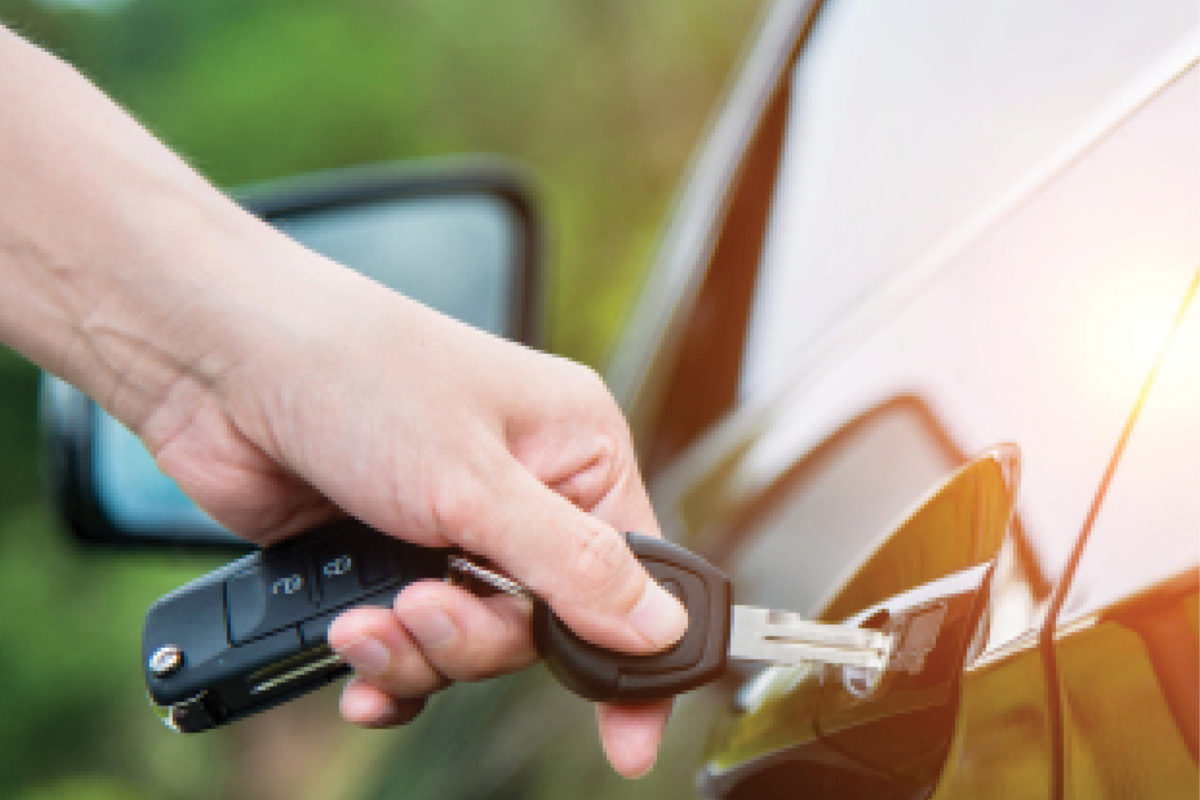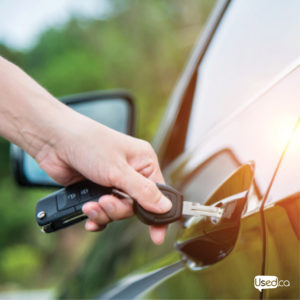
You’ve been searching around and found some vehicles that could be right for you. They’re in your price range, they are year/make/models that appeal to you and their odometer readings are within the range you’re comfortable with. Before you get to the test drive phase, make sure you know the vehicle’s history with a CARFAX Vehicle History Report. It’ll tell you about what’s happened in the car’s lifetime, such as accident history, unfixed safety recalls and lien status, and give you some insight into whether it’s the right car for you. Comfortable with the history? Now it’s time to take the car for a test drive and see the vehicle up close and personal to check out all the little things that could make or break the deal for you.
The test drive is your opportunity to get inside the vehicle and see how it handles, whether your golf clubs will fit in the trunk, and if it has any strange odors or makes any mysterious sounds. Make sure you take your time and do a thorough inspection of the vehicle so when you finally do make a purchase, you can be confident it was the best decision for you.
Here are 7 tips to get the most out of your test drive:
1. Enlist a test drive buddy
Bring a friend or family member along. They can be an extra set of eyes to help spot any red flags throughout the process. They can also take notes during the test drive and provide a little extra comfort. If your spouse, partner, child or other individuals will be driving the car you purchase, it’s important they get a chance in the driver’s seat as well.
2. Decide which features are important
Come up with a list of what you want in your next car, and another list of what you NEED. Maybe you care more about comfort, or you’re looking for a vehicle that can provide you with reliable handling in rough weather conditions like rain or snow. Determine which interior features are your top priority and bring a checklist to review on your drive to see how well that vehicle measures up.
3. Plan your route
Research where you’d like to take the car during the test drive. This is especially important if you’re traveling to visit a seller or dealership in a town or city you’re unfamiliar with. You want to try out the vehicle in different environments like stop and go traffic, highway driving, and smooth and bumpy road conditions to see how the car reacts to each surface. As you navigate the route, check for any strange noises or uncomfortable vibrations.
4. Don’t shift into drive right away
You’ll want to inspect both the exterior and interior of the car before you put it in drive. Get in and out of the car a few times – is the entrance uncomfortably high or low? Play around with the car’s accessories before you hit the road so you aren’t distracted during the drive. Ask the seller to describe any special features so you’re not surprised out on the road. Can you reach the radio, temperature, seat and mirror controls without having to lean forward? Do the pedals and seat adjustments suit you?
Test the car’s air conditioner first and then pump up the heat to see how quickly it takes to reach the maximum temperature. Try out the vents and look around at the accessories you’ll use daily – cup holders, lights, etc. Finally, see how much gas is in the tank: you won’t be able to do a proper assessment if you’re worried you won’t make it back to the lot.
5. Test drive it like you mean it
Try to take the car through all the scenarios you’d normally experience on a day-to-day basis, including accelerating, decelerating, passing and merging. Ask yourself the following questions: What’s the engine’s power like? Does it accelerate fast enough for you? Or does it have extra power that you don’t think you need? Does the vehicle upshift and downshift smoothly and at the correct time? When you’re in a highway or high-speed mode, listen to the noise of the airflow around the vehicle – is there a humming or squealing noise that would annoy you? Is the steering wheel comfortable for you? Is it sensitive to the touch or is there a lag when you turn? Does the vehicle require constant adjustment while you drive? Make a variety of left and right turns to see how the car reacts.
Take the vehicle to a safe setting where you can test out the car’s stopping power. Fill your passengers in on what you’re planning to do so they can brace themselves for a hard stop. Brake both hard and soft – did the car’s anti-lock brake system kick in as promised? Take note if the car pulled to one side or if you have to push the pedal to the floor to make the stop – these will be things you’ll want to bring up to the dealer and your mechanic during a pre-purchase inspection.
At some point during the drive, try parallel parking the vehicle. This will give you another perspective on the angles of the car and the potential blind spots you could face on a daily basis. Also, get out of the vehicle and take a look at the car when it’s not on the lot. Different lighting and a new environment could help you spot something you missed on earlier inspection.
6. Night drive
There are certain elements of the vehicle that you won’t see in the daylight. If you want to test out the car’s headlights and experience how it drives at night, ask the seller or dealer if you can drive it again later that evening. Also, don’t be afraid to take the car for another test drive if you have questions or if another family member wants to weigh in on the vehicle.
7. Winter test drive
The winter can be a great time to test drive a car because you likely won’t have many other car shoppers to compete with, which could give you more leverage around price. It’s also the perfect opportunity to put the car through realistic winter driving conditions. Here’s what to keep in mind if you take a vehicle out for a drive in the winter months:
Bring a change of shoes so you don’t get the interior of the car dirty. A pair of sneakers can also give you a better feel of how the vehicle moves, compared to bulky winter boots.
You should still drive the vehicle at both high and low speeds, but if the road conditions are icy or snowy, consider an empty parking lot for brake tests or any risky maneuvers.
Even though the temperatures are chilly outside, you’ll want to test the car’s air conditioning as well as the heat and defrost. If the vehicle is covered with snow, ask the dealer if you can scrape off the snow or take it through a car wash, so you can check out the car’s exterior.
A good test drive can take up to 30 minutes, so take your time. You’re making a big commitment and the test drive is when you decide whether the car is right for you. Once you arrive back to the lot, write down your observations. This will help you compare vehicles and it will pinpoint issues you want to ask your mechanic during a pre-purchase inspection. It’s also a great idea to test drive a few different cars so you can see what you like in a car.









